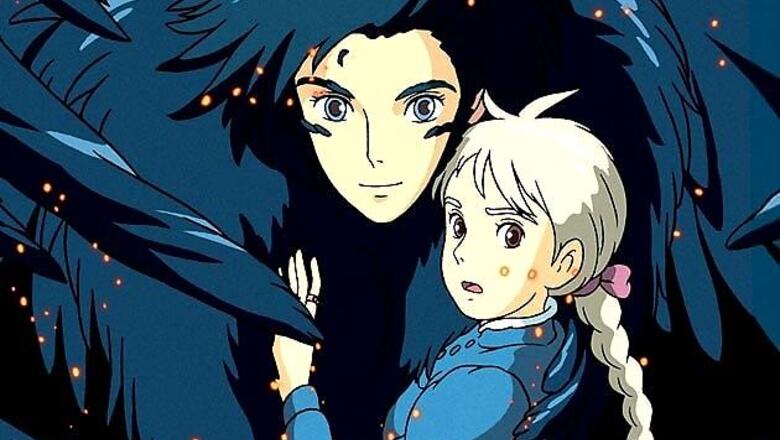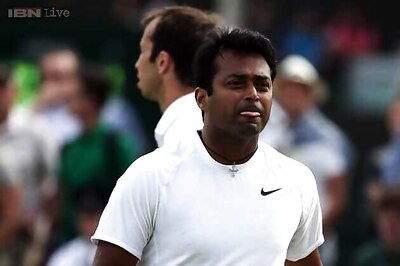
views
As you prepare to be genuinely awed by the most famous giant monster of them all this Friday, it will mark yet another milestone for Japanese popular culture, considering the lasting impact it has made on movies, graphic novels and TV series across countries. And yet anime, probably the most quintessentially Japanese of all these pop culture mainstays, has never really had a proper Hollywood global offering.
But for all that, a brief introduction to the different terms which have accompanied Japanese pop culture worldwide, and please don't groan. Very few outside the comic book reader fraternity had bothered with terms like 'metahuman' and 'mutant' before superheroes went mainstream. And so: Godzilla is part of the giant monster 'kaiju' genre of movies. Although the first King Kong movie (a Hollywood creation) predates the big lizard by two decades, it is Godzilla and his antics in Tokyo - 'antics' being a euphemism for 'utter destruction' - which made the kaiju genre popular. Americans had their revenge by making 'Godzilla' in 1998, but we will pretend that movie doesn't exist in the canon.
Anime, on the other hand, is animated movies, shorts and TV series, and is derived from manga, its comic book counterpart. Anime artwork are known for their distinctive human features, such as big eyes, sharp, angular faces, young bodies (shrinks have a field day analysing the Japanese male's obsession with young-looking fictional characters in art). Recent anime TV series have been extremely popular in India as well. Think 'Rurouni Kenshin', 'Dragonball Z', 'Bleach', 'Naruto', 'Avatar'. And both anime and manga have a huge following in the US and have influenced mainstream comic book artists in DC and Marvel.
It is certainly ironic, because manga is not derived from either medieval or early modern Japanese representational art, or indeed from Japanese culture at all. It is true that the graphic novel, such as it is, finds its first genuine modern counterpart in the 17th century woodblock and paper prints of the exploits of the legendary (and very real) swordsman Miyamoto Musashi, with text accompanying the striking art. In museums and private collections across Japan today you can find Musashi battling a whale, or a monster or two, and sometimes, just for the heck of it, a bunch of ninjas. As an influential theory goes, that makes Musashi the world's first comic book superhero.
But that art was vastly different from Japanese manga today, which comes from a source you'd never expect. It begins with a very talented young artist called Osamu Tezuka, and his inspiration was Donald Duck. And the rest of Disney's creations. From them he borrowed the big round eyes, the eclectic dressing sense (Donald still doesn't wear pants, after all), the breakneck storylines of Duckberg and Mickey's pals, the sense of rousing adventure and slapstick humour, and created manga with such classics as 'Astro Boy', 'Black Jack' and 'Kimba the White Lion'. And then he took what was an essentially print art form to the big screen, creating anime.
And here's how influences crisscross countries and cultures today, as they've always done. Tezuka's Kimba was derived from Walt Disney's art, but it was also borrowed by Disney Studios and remade as 'The Lion King', where the eponymous character was called, well, Simba.
So it hasn't really been a one-way story where Japan comes up with out-of-the-box creative ideas that the rest of the world flocks to. Japan has been borrowing ideas and themes from everywhere all this while, including the girls who dress as late 19th century Victorian ladies, thereby shocking contemporary British tourists.
But while manga, and subsequently anime, have gathered massive fan followings worldwide, Hollywood has been ambivalent about anime for a long time. On the one hand you have instances such as the Matrix series, clearly inspired by tropes from anime, but filmed in live action. And yet the Japanese influence was so tangible that the Wachowskis made an anime anthology of short films about the Matrix, called 'The Animatrix'. Despite 'The Matrix' being a global hit, 'The Animatrix' got a limited video release. Clearly Hollywood thinking was anime wasn't mainstream enough. Now they are remaking 'Akira', arguably one of the greatest anime movies ever made, but they're filming it in live action. There was also the atrocious 'Avatar: The Last Airbender', by M Night Shyamalan, a live action movie based on a fine anime TV series, but like 'Godzilla 1998' we will pretend it never happened.
Meanwhile, anime films based on any concept have been warmly received by Hollywood...provided the Japanese do it. We have the examples of 'Howl's Moving Castle', by Hayao Miyazaki, an anime movie based on a British author's very British young adult novel, for one. We have the excellent 'Spirited Away', also by Miyazaki, which was marketed by Disney worldwide. 'Princess Mononoke', 'Afro Samurai', 'Vampire Hunter D', 'Ghost in the Shell', 'Perfect', 'Blue', 'Ninja Scroll', 'My Neighbour Totoro' (another Miyazaki gem), all finding rave reviews in the West and among non-Japanese English-speaking audiences, but Hollywood hasn't taken up the mantle. Very striking for an industry that appropriates talent and franchises from everywhere.
What explains this? It can't be merely respect for cultural boundaries. Both Japanese and American filmmakers have had a healthy interchange of ideas and influences, although sometimes it becomes less homage and more parody, such as the irrepressible Tarantino's appropriation of both Japanese chambara (swordfighting) and Chinese martial arts movie genres' tropes for Kill Bill.
It certainly can't be the perception that only the Japanese make good manga and anime, and only in Japan: Japanese artists have collaborated with DC and Marvel quite successfully, and some are permanently based in the US.
It also can't be Hollywood studios' inability to cooperate with Japanese studios. In fact, the two collaborate far more than the Americans do with anyone else, barring the British. This weekend's monster rampage, remember, comes courtesy Warner Bros and Toho, Japan, the latter being the studio that created Godzilla in the 1950s in the first place. Great movies have happened when Japanese and American studios have combined: 'Tora! Tora! Tora!', 'Flags of Our Fathers' and 'Letters from Iwo Jima' being the better-known instances.
Perhaps it comes down to an innate conservatism in Hollywood that never quite goes away. It took 47 years of superhero movies before the genre became really mainstream in the early 2000s, for instance, and martial arts is still left to the Chinese, Japanese, Koreans, Thais and now (courtesy Iko Uwais) the Indonesians. So while American movie moguls are content to let the Japanese be crazy on their islands and come up with radical genres and themes, they'd rather play it safe and make live action versions of them until they are certain the world needs animated 40-kilo teenagers with katanas.
Until then we will have Japanese anime. And we're not complaining. Now if only they were released in Indian theatres...




















Comments
0 comment